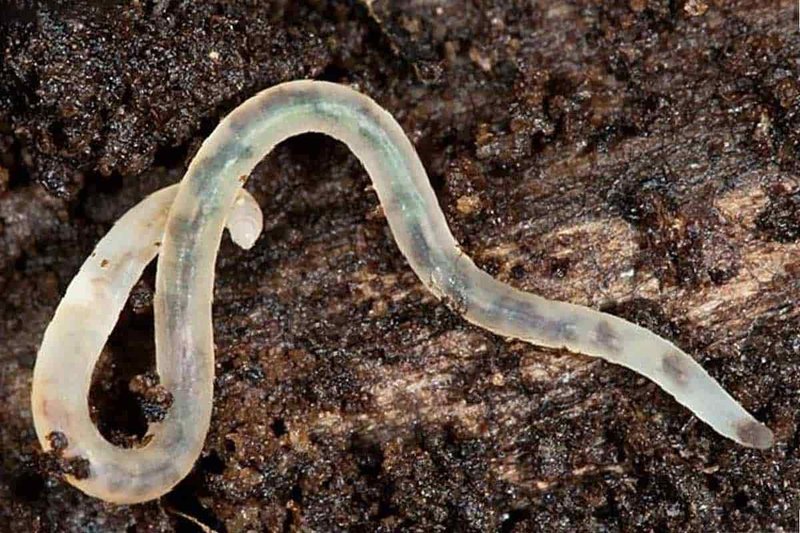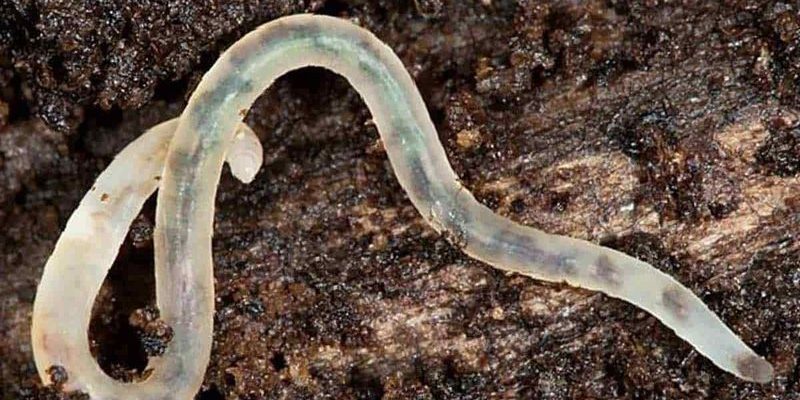
So, what exactly are grindal worms? They’re small, white worms that thrive in rich, moist soil. Often mistaken for their more famous cousins, the nightcrawlers, these little guys have gained popularity among gardeners and fish enthusiasts alike. Their ecological importance is surprisingly significant, and understanding their role can give us a deeper appreciation for nature’s intricate web of life.
In this article, we’re going to explore the vital functions that grindal worms serve in our environment, and how they can positively impact our gardens and aquatic systems. Let’s dig into their world and discover why these tiny creatures matter more than we might think!
What Are Grindal Worms?
Grindal worms, scientifically known as *Enchytraeus buchholzi*, are a species of tiny white worms found in soil and decaying organic matter. They typically grow to about 1 to 2 inches long and have a soft, segmented body. If you’ve ever picked up a handful of rich garden soil, there’s a good chance you’ve encountered these little remnant wrigglers!
You might be wondering why you should even care about such a small creature. Well, these worms are often considered as indicator species, meaning their presence can signal the health of an ecosystem. Essentially, if grindal worms are thriving, it’s a good sign that the soil is healthy and rich in nutrients.
Grindal worms reproduce quickly, making them a sustainable option for gardeners and fish keepers alike. Not only do they thrive in compost, but they can also be a nutritious food source for your pets, especially fish. Their high protein content and soft bodies make them an excellent choice for feeding smaller fish or even young birds.
The Role of Grindal Worms in Soil Health
So, why are grindal worms important for soil health? Let me explain. These little guys are amazing decomposers. They break down organic matter like dead plants and fallen leaves, turning it into nutrient-rich soil. This process, known as humification, enriches the soil and makes it more fertile for plants to grow.
As grindal worms digest these materials, they excrete what’s known as worm castings. These castings are packed with beneficial microorganisms and nutrients that plants love. This means that their role is not just about recycling waste; it’s about enhancing the overall quality of the soil. Think of it like a slow-cooked meal that gets better with time—the longer they work, the richer the environment becomes.
Furthermore, grindal worms help improve soil structure. As they burrow through the soil, they create channels that allow air and water to penetrate more easily. This aeration is crucial for healthy root development in plants, allowing them to access the nutrients they need to thrive. Without these worms, you might end up with compacted soil that stifles growth.
Grindal Worms and Composting
If you’ve ever dabbled in composting, you’ll appreciate how grindal worms can take your compost game to the next level. These little worms love to munch on decomposing organic matter, speeding up the composting process. When added to your compost pile, they help break down materials like vegetable scraps, coffee grounds, and even paper products.
Here’s the thing: grindal worms are not as demanding as some other composting creatures, like red wigglers. They thrive in moister environments and can handle a wider range of materials, making them beginner-friendly. Plus, you don’t need to worry too much about keeping them fed; they’ll find plenty to snack on as they mingle with food scraps.
Not only do they help with decomposition, but their castings enrich the compost. This means you’ll end up with more nutrient-dense compost to use in your garden. Imagine spreading all that goodness around your plants—it’s like giving them a multi-vitamin!
Grindal Worms in Aquaculture
Grindal worms aren’t just great for the garden; they also play a significant role in aquaculture. If you keep fish, especially young or smaller species, grindal worms make for a fantastic live food option. Many fish enthusiasts prefer live food because it can promote better growth and health compared to dry food alternatives.
Why are they so good for fish? For one, their high protein content provides essential nutrients for growth. Plus, their soft bodies make them easy for fish to digest. You might be surprised at how eager your fish will be to gobble them up! Just think of it as serving your fish a delicious buffet whenever you feed them.
Moreover, the use of grindal worms in aquaculture is sustainable. Unlike some other live food options, they can be bred easily at home. You can create a small culture in a container with damp substrate and feed them kitchen scraps. This not only reduces waste but also ensures a fresh food supply for your aquatic friends.
Challenges Facing Grindal Worms
Despite their benefits, grindal worms face some challenges. Urbanization and industrial farming practices can harm their habitats. Soil degradation, pollution, and the use of pesticides can diminish their populations. When we lose these tiny helpers, we may inadvertently compromise the health of our soil and gardens.
Another challenge is awareness. Many people are just unaware of their ecological roles. By not recognizing the value of grindal worms, we might overlook simple solutions for improving our gardens and ecosystems. Promoting knowledge about these creatures can encourage more people to appreciate and protect them.
Lastly, it’s essential to understand that while grindal worms are beneficial, they should be kept in a balanced ecosystem. Overemphasizing their use in composting or fish feeding without considering other species can lead to an imbalance.
How to Cultivate Grindal Worms
If you’re intrigued and want to start cultivating grindal worms, it’s easier than you might think! Here’s how to get started:
1. Choose Your Container: Use a small, shallow container like a plastic tub or glass aquarium. Make sure it’s clean and has a lid to maintain moisture.
2. Add Substrate: Fill the container with damp organic matter like coconut coir, peat moss, or even soil. Aim for a mixture that holds moisture but allows for airflow.
3. Introduce the Worms: You can purchase grindal worms online or from a local supplier. Add them to the substrate, and they’ll start working their magic.
4. Feed Them: Provide a food source by adding kitchen scraps like vegetable peels, oatmeal, or coffee grounds. Avoid meat and dairy as they can attract unwanted pests.
5. Maintain the Environment: Keep the substrate moist but not soggy. Check on them regularly and adjust moisture levels as needed.
Before you know it, you’ll have a thriving community of grindal worms ready to enrich your garden or feed your fish!
Grindal worms may be small, but their impact on our environment is anything but insignificant. From improving soil health to enhancing composting and supporting aquaculture, these little creatures prove that even the tiniest beings play an essential role in our ecosystem.
As we become more aware of the ecological importance of grindal worms, we can take steps to protect their habitats and ensure that they continue to thrive. By integrating them into our gardening practices or aquariums, we not only benefit ourselves but also support the larger web of life around us. So next time you’re in the garden or by the water, take a moment to appreciate these unsung heroes of the ecological world. They’re doing a lot more than meets the eye!

